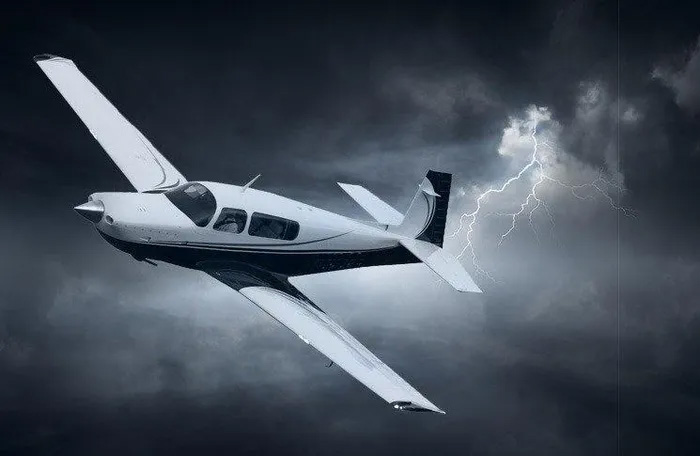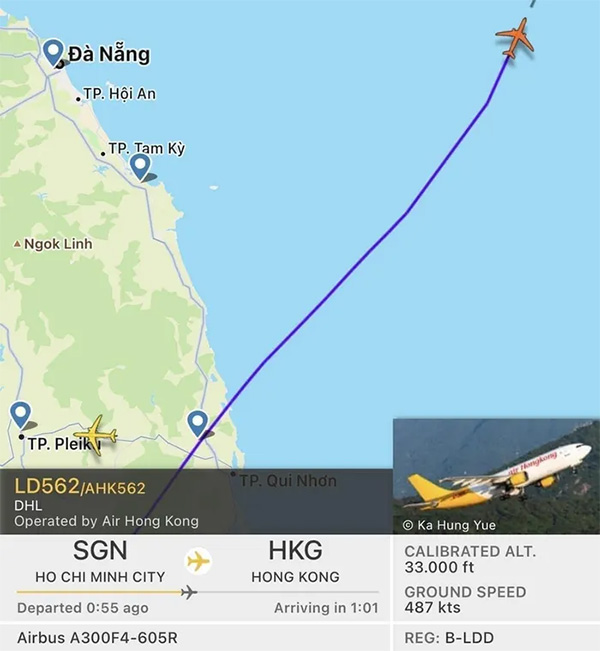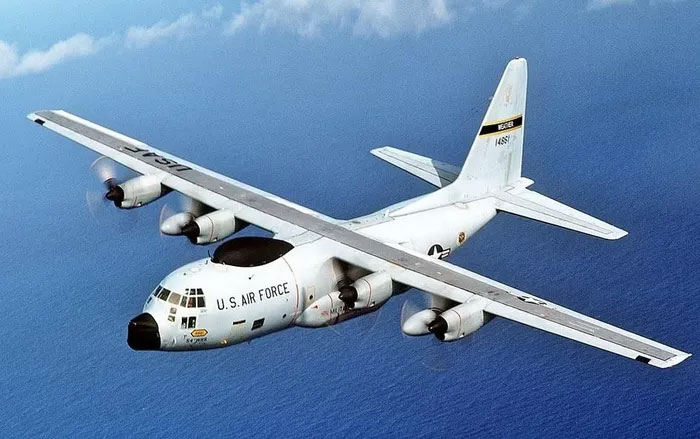If operating in stormy areas, airplanes are not affected by bad weather.
On September 27, images tracking flights in Vietnam circulated on social media via the FlightRadar24 application. Many were surprised to see that some planes were operating right in the affected area of Typhoon Noru, in the central provinces.
However, this is not unusual. The flight paths had been calculated in advance and posed no danger to passengers onboard.

Planes can still operate in bad weather. (Photo: Flight Safety).
Flying through storms is not unusual
Severe storms are one of the reasons for flight cancellations. This occurs in areas that often experience extreme weather. However, according to SimpleFlying, modern commercial airplanes are designed to withstand challenges greater than those posed by storms.
Specifically, the area affected by the storm is located at about 20,000-30,000 feet (6-9 km) above ground level. Airports will close and airlines will halt operations, preventing takeoffs and landings around the storm. However, at higher altitudes, above the affected area, planes can still operate.

There are still flights passing through the affected area of Typhoon Noru. (Photo: FlightRadar24).
For example, Vietjet flight VJ774 was operating at an altitude of approximately 33,000 feet when flying over the central provinces on the morning of September 28. Therefore, it could avoid being affected by bad weather.
“In aviation, tropical storms do not have the high affected areas like traditional thunderstorms. The convective area is concentrated only in the core of the low-pressure system or the eye of the storm. Therefore, from a flying perspective, there is no issue if flying above the storm and the plane is equipped with a reflective radar system“, said James Aydelott, a meteorologist and pilot, in an interview with The Point Guy.
Theoretically, if the storm does not have a high affected area, planes can be planned to fly over it. However, some super typhoons have operational areas higher, reaching about 50,000 feet (15 km). Under these conditions, no commercial aircraft is qualified to operate safely.
Yesterday, a plane departing from Punca Tana to the capital Newark of the Dominican Republic also drew attention. While many other flights were canceled, JetBlue’s flight still flew through Storm Fiona.
“I saw JetBlue’s flight seemed to have passed through Fiona. I believe that depending on the altitude of the storm clouds, it is still possible to fly over it”, shared Nick Underwood, an aerospace engineer.
Derek Dombrowski, a spokesperson for JetBlue, stated that they had been monitoring Storm Fiona to navigate a safe journey. Meanwhile, many flights were canceled by the airline due to the storm’s impact.
“Each flight is planned by a team of experts. They will also monitor the flight path continuously. It is crucial that when routing, the direction and altitude of the weather system are taken into account in our decision-making”, Dombrowski said.
Reasons airlines choose not to fly through storms
Simple Flying reported that Boeing and Airbus aircraft are capable of flying above or through a storm. However, most airlines prefer not to do so because flying through a storm poses significant risks for commercial airlines.
If there is an engine failure or a medical emergency, the options available for pilots to handle the situation would be limited. They could choose to land or divert, but suitable airports would be farther away.

American “storm chaser” aircraft. (Photo: Getty).
The dangers when an airplane is near a storm include lightning, hail, and strong winds at the center. According to a report by the Federal Aviation Administration (FAA) in 2011, turbulence is extremely severe within a 20-mile (32 km) radius of a storm’s center.
Randy Bass, a meteorologist running Bass Weather Services, stated that it is possible to fly through, but the experience of flying over a storm is not pleasant. “I wouldn’t want to be on that flight”, Bass said.
Additionally, there are aviation exceptions during storms. The U.S. Air Force’s weather reconnaissance squadron and storm chasers from the National Oceanic and Atmospheric Administration fly directly into the eye of the storm to collect important data.
These units use Lockheed WC-130J aircraft to penetrate the storm’s center at altitudes of 500-10,000 feet multiple times during each mission. However, these vehicles are reinforced, with wing structures standard for conventional aircraft.


















































